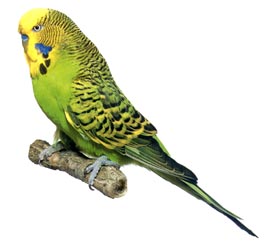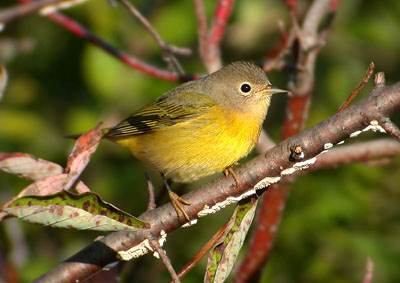Canaries (Serenus canaria) are a type of finch. They are popular as a cage bird, and rightly so. They are one of the easier birds to raise as well as being entertaining and attractive. But, if you thought a canary was just a canary, you are sadly mistaken.
Canaries are often divided into three groups. These groups are Type, Colour and Song.
A good 'type' canary will have the specific traits of its breed as regards shape and size. Its colour and song attributes are of lesser importance.
 'Colour' canaries
'Colour' canaries don't have to sing well or have a particular shape. They just need to be the 'right' colour.
Similarly,
'Song' canaries must sing well – not necessarily loud and long as some breeds sing softly, but each must be a good representative of its
breed if it is to do well in the show ring. Luckily for the canary, there are plenty of people who love them for exactly what they are regardless of whether or not they possess special features.
Breeders of 'Type' canaries are looking for a specific physical shape or characteristic. They have little interest in the colour or singing ability. Today, Type canaries can be small, large, frilled, crested or even have humped backs.
The
Lizard canary is aptly named as the feathers on the back and shoulders have black crescent-shaped spots giving the appearance of the scales of a lizard. This colour effect is called 'spangling' on the back and 'rowing' on the breast. These colourful feathers become less obvious with each moult so birds usually appear only once on a show bench. Lizard canaries also have a 'cap of colour' – a single circular pattern of feathers on top of the head. This may be an oval shape with clear edges or an irregularly shaped circle. The legs and beak are a shiny black.
The
Border canary, or Border Fancy is named for its origins on the border of Scotland and England. Around the 1900s it was the most popular canary in the British Isles. It was once known as the 'wee gem' but it is now one of the largest of the canaries and is about 5 ¾ inches long. It is a well-shaped and slightly chubby bird with a well-rounded head and bold, bright eye. It comes in white, blue, green, yellow, buff and cinnamon colours. It can also be 'ticked' or 'variegated'.
The
Gloster originated in England and has a neat, well-rounded cap which covers about half its eyes. The Gloster is not to be confused with the Crested canary which is a separate breed. If a Gloster has a crest it is referred to as a Corona. Otherwise it is a 'plainhead' or Consort. Coronas should not be paired as the survival rate of the chicks will be very low. All other pairings result in normal survival rates.
 The Gloster
The Gloster was recognised as separate from the Crested in 1925. The Gloster is short and
stubby, about 4 ¾ inches in length. It is named after the English county of Gloucestershire where it was first bred by a Mrs Rogerson. Glosters are seen in green, yellow and cinnamon as well as several other colours. The Gloster is usually a good singer.
The
Crested canary is thought to have arisen around 1800 with the Crested Norwich and Crested Lancashire becoming established at that time. Crossing these two breeds resulted in the Crested being recognised as a distinct breed in 1880. It is a large, heavy-set bird and was used to create the Gloster. The Crested Norwich is a chubby bird and comes in many colours.
The
Fife canary is a relatively recent addition to the canary types and was bred by breeders in Fife County, Scotland, being officially accepted in 1957. This small bird is under 4 ½ inches long. It is agile with a rounded back and breast, giving it a rotund appearance. It is seen in various colours, including variegated.
Norwich canaries took on the name of the town Norwich in England after arriving there with Flemish refugees. They are now a large breed, well-rounded and nobby and available in many colours. The feathers are bulky and fluffy making the bird look even bigger than its true size.
The
Yorkshire canary is one of the largest of the canary breeds. It was
developed in the mid 1800s and first exhibited in 1870. Although developed in Bradford, it had its first showing in Yorkshire, hence the name. It is tall and slim with a large chest and shoulders, narrow waist and an erect stance. It appears to be standing at attention and is a popular show bird. Because of its miliary uprightness, it has become known as the 'guardsman' or 'gentleman of the fancy'. The ideal angle when standing is described as being 'five past seven' so the hands of a clock at this time shows the ideal angle for the stance of the bird. Being so large, cages and nests need to be accommodating if
breeding is to be successful.
The
'frilled' canaries are a sub-group of the Type variety. The feathers of the frilled breeds turn up and out rather than laying close and snug against the body of the bird. Some of the frilled canaries are 'birds of position' meaning that they have a particular stance which is all-important in a show bird.
Frill canaries include the Parisian frill, the Padovan, Milanais, and
North and South Dutch Frills. All these have frilled feathers to a greater or lesser degree. The birds of position include the Scottish Fancy, South Dutch Frill, Belgian Fancy and the Gibber Italicus.
The Belgian Fancy, South Dutch Frill and the Gibber Italicus both have a hunched appearance. These birds hold their legs and body at right angles to the perch. The prominent shoulders and head are held parallel to the perch so the bird forms a sort of figure '7'.
The Scottish Fancy extends the head and neck but swings the tail back under the perch. So the outline from the tip of the beak to the tip of the tail follows the arc of a circle – the nearer
a perfect circle the better the bird.





















 Because the Aplomado is such a specialised flying falcon, much of the prey it catches are birds. In fact about 90 percent are small birds. This species is incredibly intelligent and like the
Because the Aplomado is such a specialised flying falcon, much of the prey it catches are birds. In fact about 90 percent are small birds. This species is incredibly intelligent and like the 











